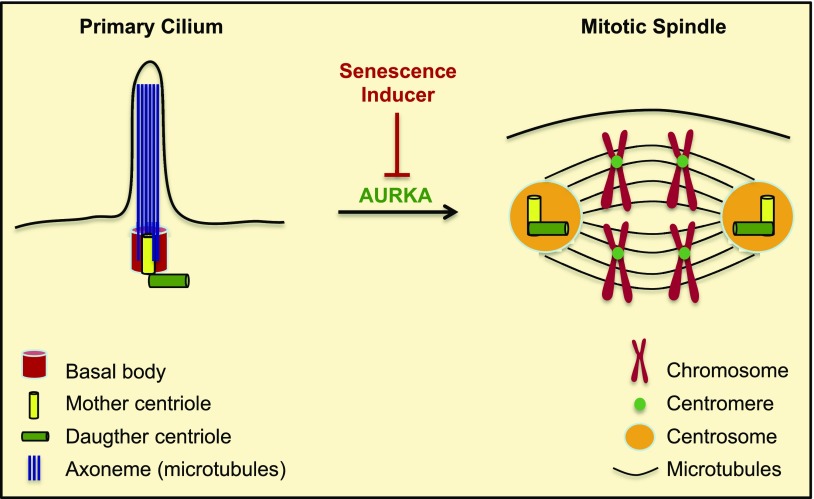Figure 15.
Summary of the role of primary cilia in the development of cellular senescence. When the cell enters the cell cycle, the primary cilium is disassembled, a process that is regulated by AURKA. The mother and daughter centrioles duplicate and form the centrosomes, which organize the spindle fibers to form the mitotic spindle. The mitotic spindle allows proper chromosomal segregation to form 2 daughter cells during mitosis. Inhibition/degradation of AURKA by senescence inducers prevents primary cilium disassembly, forcing the cell to use the centrioles to maintain the primary cilium. As a result, the centrioles are not available to form the centrosomes and generation of a properly organized mitotic spindle is inhibited. This leads to an irreversible growth arrest/senescent status, because restoration of AURKA expression and absorption of the primary cilium to free the centrioles are not sufficient for cell cycle reentry.

